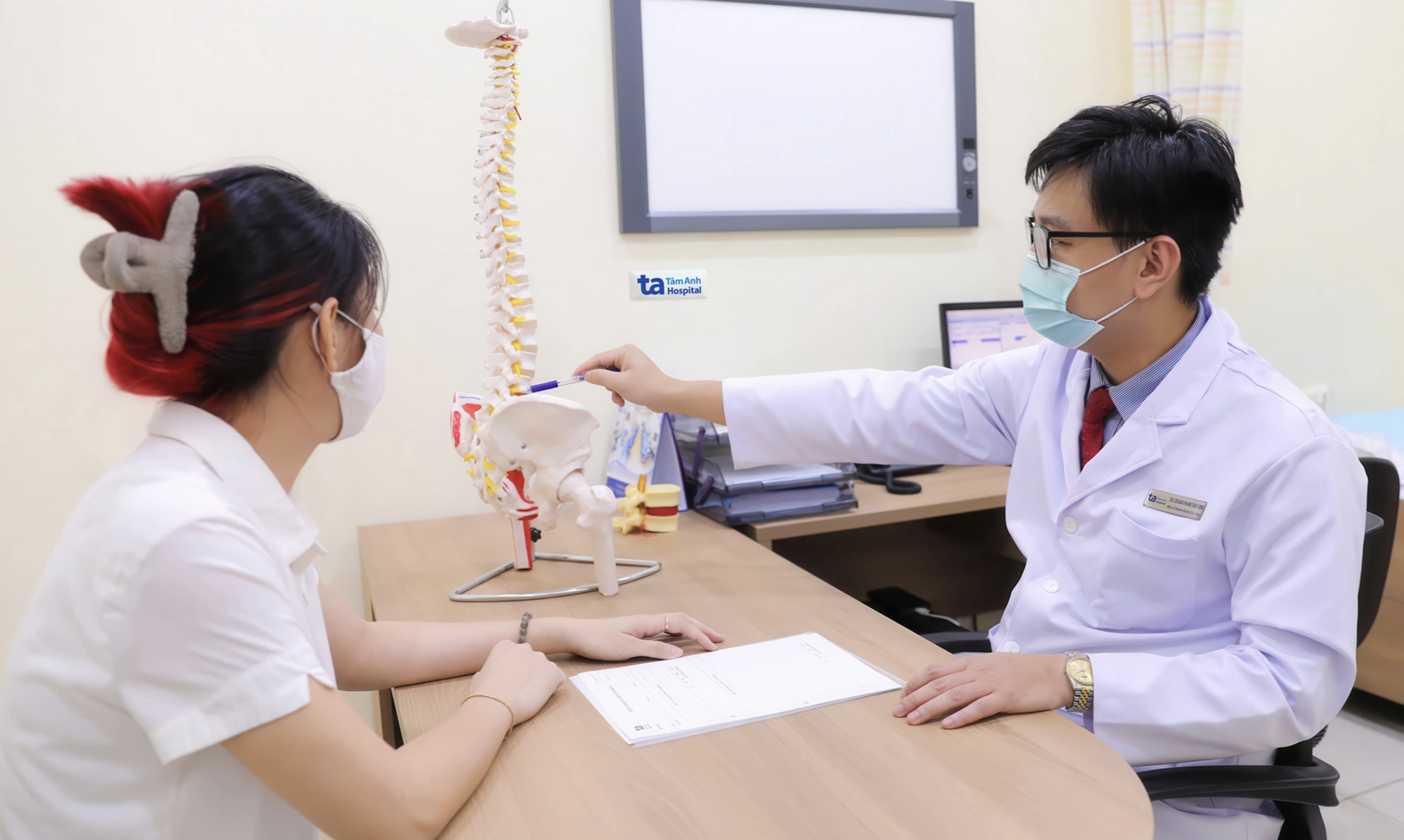Answer:
Sitting for extended periods, especially common among office workers, increases the risk of musculoskeletal disorders. Sitting continuously for 6-8 hours each day causes muscle groups in the neck, shoulders, and lower back to tense up to maintain balance and posture, leading to persistent pain. This pain can radiate down the arms if the cervical vertebrae are affected or spread to the lumbar region if excessive pressure is sustained over time.
Prolonged sitting hinders blood circulation, especially to the joints. When blood circulation is poor, the production of synovial fluid decreases, directly impacting joint lubrication. This can result in stiff, difficult-to-move joints, accompanied by pain, clicking sensations, or numbness when changing positions. If this occurs frequently without intervention, it can increase the risk of premature osteoarthritis, particularly in weight-bearing areas like the lumbar spine, hips, and knees.
 |
A doctor explains a herniated disc to a patient. Illustration: Tam Anh General Hospital |
Muscles weaken due to lack of movement. Sustained pressure on the coccyx and sciatic nerve can cause pain that radiates to the buttocks, thighs, and legs. Some individuals experience numbness and leg cramps due to poor circulation, especially when sitting cross-legged for extended periods.
To prevent these issues, office workers should proactively change their daily habits. It’s recommended to stand up and walk around or do some simple stretches every 30-45 minutes to stimulate blood flow, relax muscles, and reduce pressure on the joints.
Correct sitting posture is crucial. Maintain a straight back, lean slightly against the chair, keep shoulders balanced, position the eyes level with the screen, and place feet flat on the floor. Avoid crossing legs or hunching forward for extended periods.
Dedicate 20-30 minutes daily to brisk walking, yoga, swimming, or light stretching exercises at home. These activities strengthen the musculoskeletal system, reducing the risk of degeneration or injury.
Ensure adequate intake of calcium and vitamin D, combined with specialized natural nutrients like undenatured type 2 collagen and hydrolyzed collagen peptides. These contribute to immune regulation, synovial fluid maintenance, and cartilage and subchondral bone regeneration. Eggshell membrane, turmeric root extract, and chondroitin sulfate support anti-inflammatory action, pain relief, and slowing the progression of joint diseases, promoting joint health.
If you experience frequent back, neck, or joint pain, consult a doctor or a specialist in orthopedics for appropriate treatment and to prevent further complications.
Doctor Hoang Quyet Tien
Medical Information Center
Tam Anh General Hospital, Ho Chi Minh City
| Readers can submit questions about musculoskeletal diseases here for doctors to answer. |












